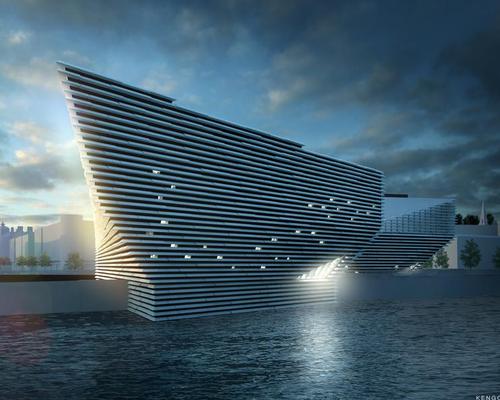20 Feb 2017
New film sheds light on engineering innovation behind Kengo Kuma's Dundee design museum
BY Kim Megson

The Victoria and Albert Museum (V&A) has released a new video exploring the architectural inspiration and complex engineering challenges facing its forthcoming branch in Dundee, Scotland.
The new film features interviews with the building's architect Kengo Kuma, the executive director of Dundee City Council Mike Galloway and some of the engineers and builders charged with realising the ambitious vision for a cultural landmark capable of reigniting the city’s waterfront.
They explain how they are using advanced techniques to complete the structure, which will be formed of 20 different curving elevations and external walls designed to response a cliff face in reference to the coastline of north eastern Scotland.
Each wall is being cast with a bespoke mould, which when removed will allow thousands of unique concrete and stone panels to be attached so that they step in and out the walls.
“The design of this has required engineering sculptural techniques that are traditional, in that it’s concrete and it’s formwork,” said John Tavendale of engineering firm Turner & Townsend. “But to actually build that structure in its temporary state requires very, very creative engineering.”
Galloway added: “It’s a completely unique building. I don’t think we would have been able to build this building ten years ago, given the nature of its design and the technology and the preciseness of the engineering that’s required to achieve it.”
Speaking about the design, Kuma said: “The beauty of cliffs comes from the long, long dialogue between earth and water. I want to translate that beauty to a contemporary building. It’s very different from a concrete box, and very different from the museums of the 20th century.
“The inclination of the facade can give a different type of experience. If it’s too vertical, the vertical void rejects the people. The building should invite people to the waterfront.
“This is not an independent building. It’s a part of the big, ambitious urban design and can change the community. I’m very happy to work for that kind of project.’
The museum’s upper floor was completed last November, including an extensive public area which will house galleries, learning spaces and a restaurant. Construction work will continue throughout this year, with the building scheduled to officially open in 2018.
Kuma has previously discussed his hopes for the museum in an exclusive interview with CLAD.
Close Window